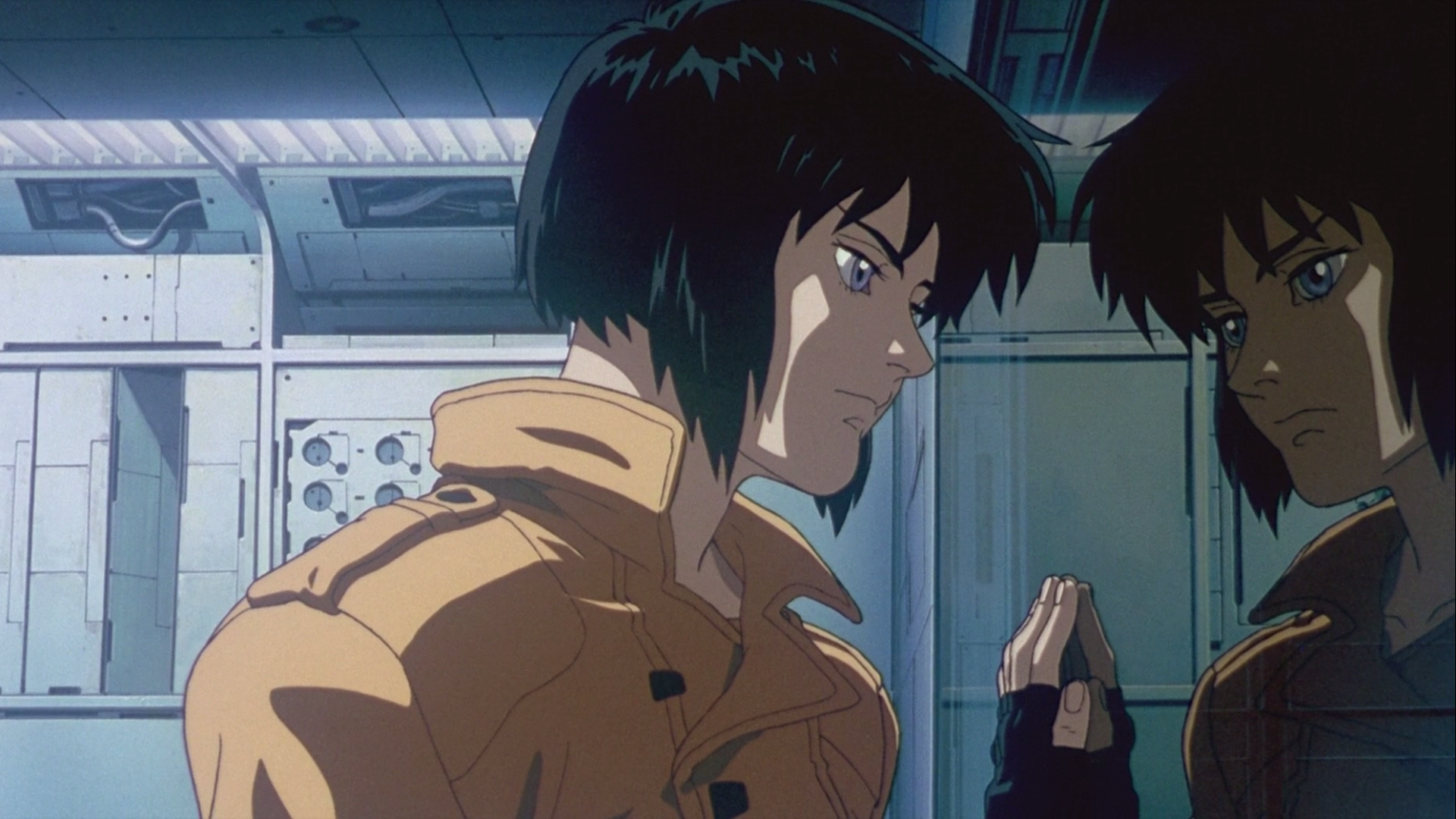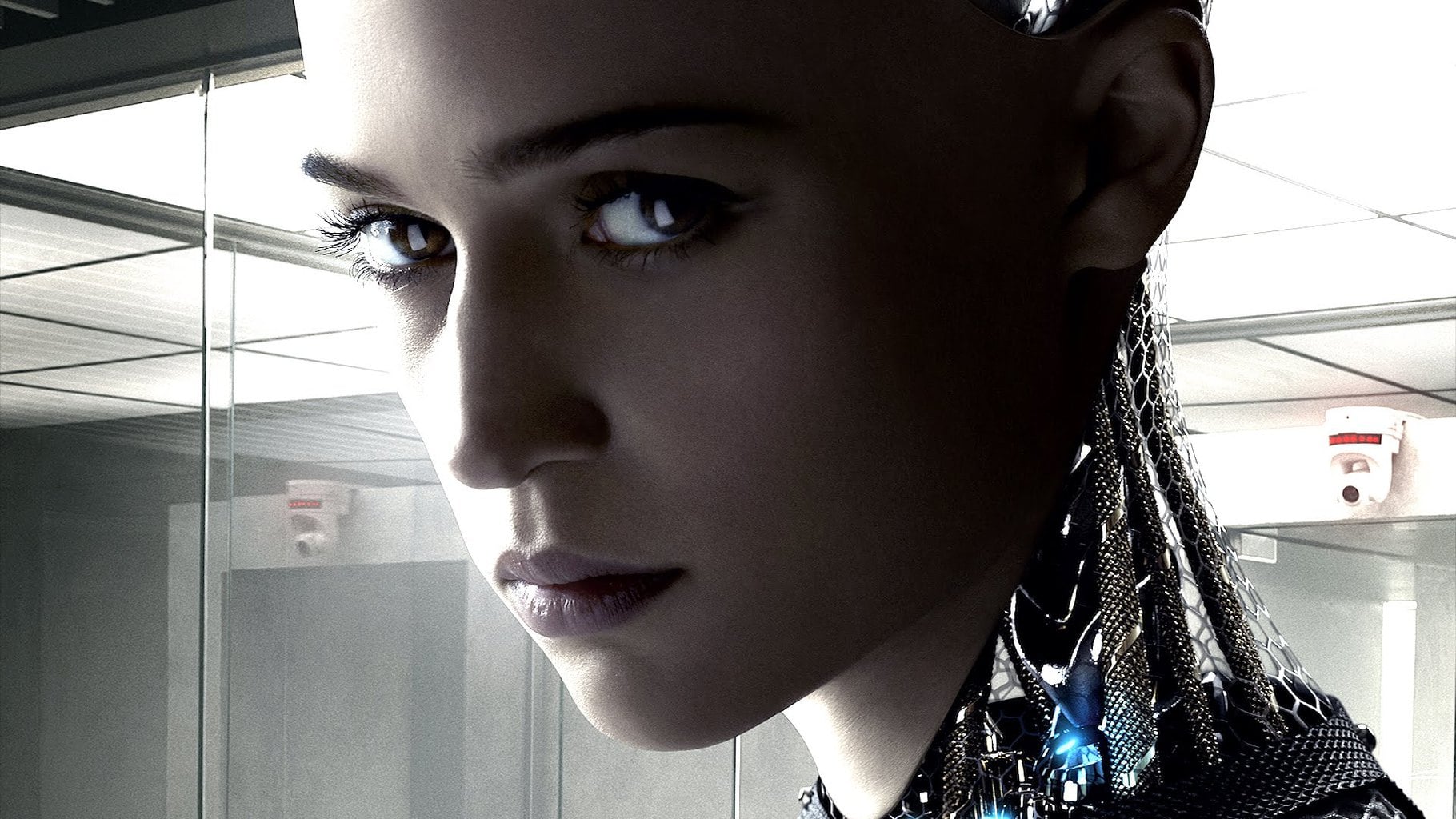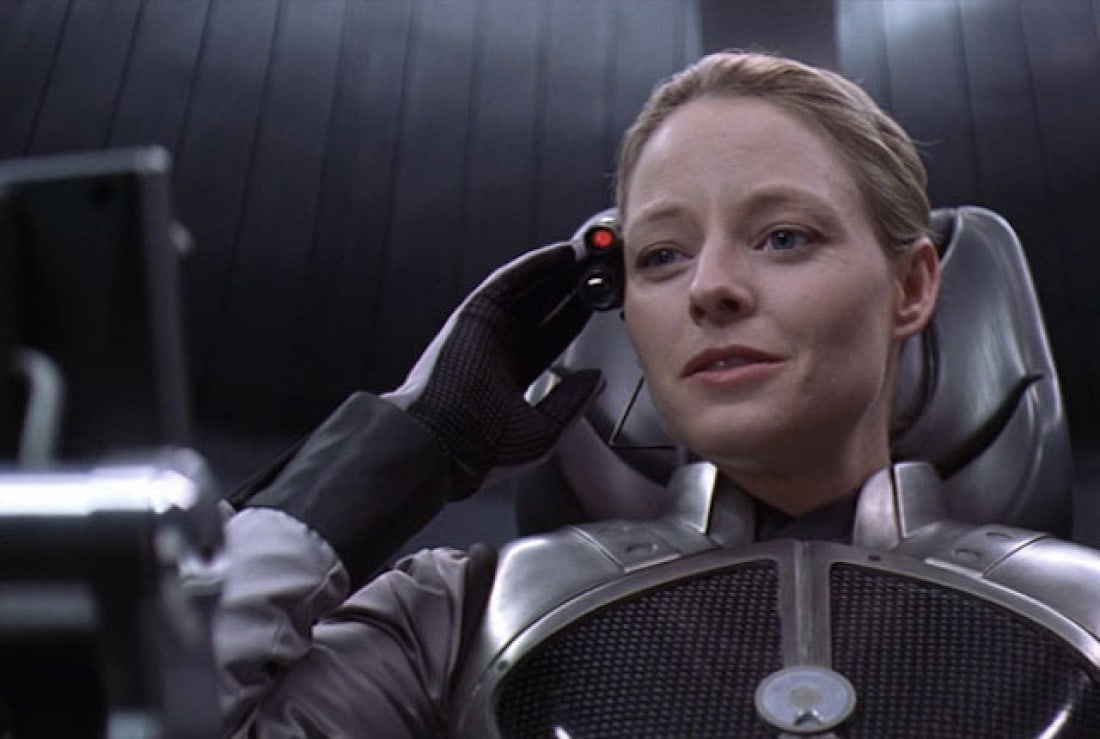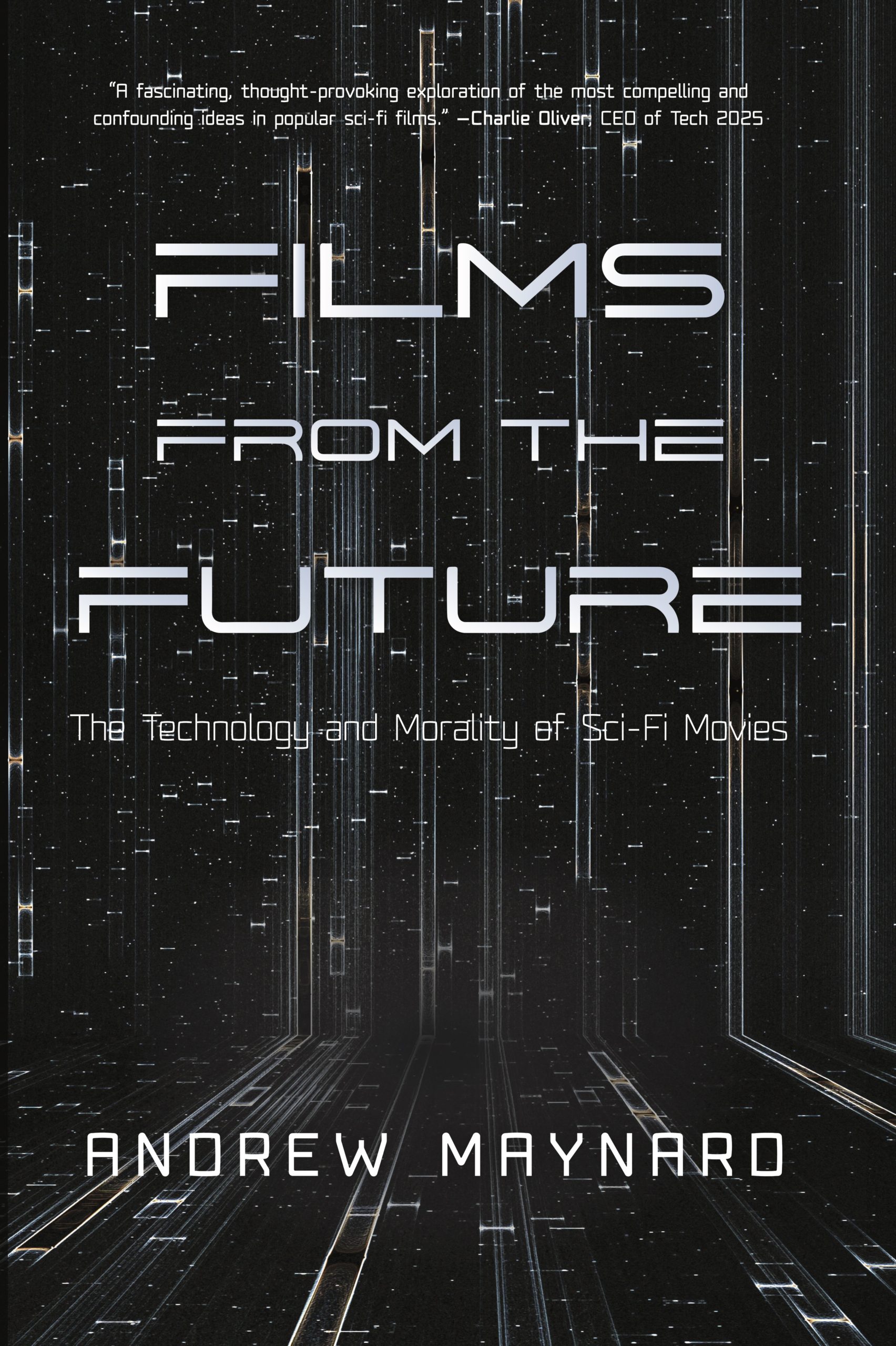Films featured in the book Films from the Future: The Technology and Morality of Sci Fi Movies, and where to watch them
The book Films from the Future is based around twelve science fiction movies (14 if you include the “bonus” movies in the first and last chapters!).
Together, these are used to tell a story about emerging and converging technologies, the opportunities they present, and the challenges of developing and using them in ethical and socially responsible ways.
These are the twelve movies that form the backbone of the book, along with where to stream them.
If you are interested in more insights into emerging tech and the future, please do check out my substack at andrewmaynard.substack.com. Thanks — Andrew Maynard

What’s it about
A wealthy entrepreneur is obsessed with creating the best theme park ever by using genetic engineering to bring back dinosaurs, until the exhibits start eating the customers …
What to watch for
Despite it’s age, Jurassic Park is a well-crafted action movie that touches on themes that are more relevant than ever today, including genetic engineering, de-extinction, complexity theory, and the follies of short-sighted entrepreneurial ambition. Watch the movie for the cautions against developing powerful technologies without a thought to the consequences, and the celebration of the awesomeness of nature — even when it’s less than natural!
Tech connections explored in the book
Despite being based on some questionable science (Dinosaur DNA isn’t preserved long enough to be reconstructed and used to bring these creatures back from the dead), Steven Spielberg’s classic is a wonderful jumping-off point for exploring modern-day genetic engineering, and the growing capabilities in “resurrection biology”. While it was just a fanciful idea back in 1993, these days CRISPR-based gene editing and synthetic biology are revolutionizing our ability to edit biological “code”, and even allowing us to think about bringing species back from the dead. We won’t be seeing living breathing dinosaurs any time soon, but scientists do have their eye on bringing back species like wooly mammoths and others from the Pleistocene era and creating, not Jurassic Park, but Pleistocene Park
Where to stream it

What’s it about
Three young friends grapple with the reality that they were cloned so their organs could be harvested to keep others alive, in a society that sees them as less-than-human.
What to watch for
Never Let Me Go conjures up an alternative past where human cloning has been developed to benefit people at the expense of the clones they get their replacement body parts from. Watch the movie for a searing indictment of how technologies developed for the “greater good” can smash the lives of individuals that get in their way, and how good intentions too-easily slip into turning a blind eye to unethical behavior.
Tech connections explored in the book
Kazuo Ishiguru’s book Never let Me Go, and the movie that was based on it, were never meant to be works of science fiction. Despite this, they are a chilling reminder of how easily a deeply-desirable technology can erode the moral soul of a society. The technology in question here is human cloning. It’s a tech that’s continued to mature since the birth of Dolly the Sheep in 1996, and it’s getting closer to enabling people to be cloned. This, of course, is an ethically fraught area. But there’s a good chance that human reproductive cloning is going to happen at some point. We can already do this with dogs, cows, and other animals, and while humans are far more difficult, it’s more a case of “watch this space” than “not in my lifetime.” Of course, this does mean we’re going to have to grapple with the ethical minefield human reproductive cloning opens up.
Where to stream it
MINORITY REPORT (2002)

What’s it about
Genetically altered “precogs”predict murders before they occur, allowing law enforcers to incarcerate would-be murderers before they commit a crime; but the system isn’t as infallible as people think …
What to watch for
Many of the display technologies in Minority Report have inspired new innovations, although the genetically engineered precogs in the film are pure science fantasy. Watch the movie for the way it poses tough questions about predicting and acting on criminal intent, as real-world technologies increasingly claim to be able to do the same using AI, big data, and other means.
Tech connections explored in the book
Steven Spielberg’s Minority Report is rich in advanced technologies, from sophisticated displays and mind-hijacking “halos”, to ubiquitous biomonitoring. But it’s the crime-prediction that really stands out both as an emerging technology in today’s society, and a salutary warning against its misuse. Of course, the future-seeing precogs in the movie are pure fiction, but we are surrounded by an increasing array of science and tech that people believe can predict where a crime will occur, and who will be involved, before it happens. Functional MRI scansartificial intelligence and data analytics are all being used to try and pre-empt crimes before they happen. And while some of these attempts are clearly barking up the wrong tree, others are getting scarily good at predicting what people will do. Yet under all this is the question, just because we can do this, should we? And in many cases, the answer is probably “no”.
Where to stream it
LIMITLESS (2011)

What’s it about
A failing writer gets access to a new drug that supercharges his brain, and transforms him from a loser to a winner. But it’s not without its downsides…
What to watch for
As interest grows around the use “smart drugs” that allegedly enhance cognitive ability (and by inference, the chances of success), Limitless provides an intriguing perspective on their use and abuse. Watch it for the way it explores the often-complex issues around the personal and social consequences of using designer substances to increase mental abilities.
Tech connections explored in the book
In 2007, the journal Nature published an article on the use of “smart drugs” by academics with the title Professor’s little helper. It seems that there’s a growing interest in pharmaceutically-enhanced intelligence amongst everyone from academics and students to entrepreneurs, and as our understanding of what gets our brains going increases, so does the sophistication of these artificial enhancements. We may not get to the level of the drug NZT in the movie Limitless, but smart drugs — whether Amazon-ordered nootropics, LSD-containing “stacks”, or even every-day shots of caffeine — are increasingly a part of our lives. And perhaps surprisingly, many people seem to be OK with this. I just wonder how they’ll feel when you have to be dosed up to even get as far as a first interview in an increasingly competitive job market.
Where to stream it
ELYSIUM (2013)

What’s it about
The uber-rich of the future decamp to a luxuriant space station, while back on Earth the poor struggle to scratch a living while supporting the opulent lifestyles of the wealthy.
What to watch for
Elysium is an intriguing, if sometimes over-earnest, social commentary on the social injustices propagated by widening wealth disparity. Watch the movie for the medical diagnostics/repair technologies that loosely reflect real-world advanced in biomonitoring and 3D tissue printing, the social disparities associated with preferential access to powerful technologies, and the way that AI and robots impact rich and poor communities differently.
Tech connections explored in the book
Elysium is a movie that takes itself very seriously — almost too seriously — as it preaches about the evils of the “1%” having too much power over the “99%”. And perhaps because this is a movie with a deeply social message, the validity of the science in it leaves a little to be desired. Yet there are surprising parallels between the seemingly-miraculous medical pods in the movie that the rich use to keep themselves disease-free, and the emerging field of bioprinting. For a number of years now, scientists have been developing 3D printers capable of producing facsimiles of human body parts, by printing with a combination of cell-containing “bio-inks” and biocompatible support materials. And just in the past year or so, they’ve started to radically increase the speed and sophistication of these techniques — to the point where it may be possible to get 3D printed replacement bones, skin, and vital organs within the next few years. Reflecting this, the goal of the company Prellis Biologics is to 3D print the “entire vasculature of a human kidney in twelve hours or less” — and they are well on the way of achieving this. The question is, when they do, who gets the first 3D printed replacement kidneys?
Where to stream it
GHOST IN THE SHELL (1995)

What’s it about
A cyborg in a futuristic “special ops” unit grapples with what it means to be human when her body is not her own, and false memories and identities are being implanted in technology-augmented brains.
What to watch for
Ghost in the Shell is a deeply thoughtful exploration of what it means to be human in a future where body parts can readily be replaced by machines, and where brain-machine interfaces erode the boundaries between who you think you are, and who you may be. Watch it for the meditative sequences on what it is to be human in an augmented future, and what it means to have value in a post-human world.
Tech connections explored in the book
Forget the “ghost” of a movie-remake of Ghost in the Shellthat came out in 2017 — in contrast, the original Ghost is a masterpiece of meditation around what it means to be human in an age of body augmentation. And while we may be decades away from the tech in this beautiful Anime movie, it hints strongly at what’s to come. We’re already used to highly sophisticated prosthetics, and implanted devices like defibrillators. And Elon Musk’s company Neuralink is working hard on developing brain-computer interfaces that mimic the neural lace technology in Iain M. Banks’ Culture novels. On top of this, there’s a thriving (if slightly fringe) body-hacking communityof people intent on implanting themselves with everything from magnets to RFID chips and more. With rapidly advancing robotics, internet-connected devices and AI, we’re probably on the cusp of a surge of body-augmentation technologies. Which is great, until we begin to ask what happens when we need a software upgrade and don’t want to pay for it, or there’s a recall…
Where to stream it
EX MACHINA (2014)

What’s it about
A brilliant but self-centered and manipulative entrepreneur creates an artificial intelligence that learns about human behaviors and biases from studying Google-like searches, and is surprised when his creation turns against him.
What to watch for
What would happen if we create AIs that know enough about human biases and heuristics to manipulate our behavior to their ends? Ex Machina provides an intriguing glance into a plausible future where AIs learn to press our metaphorical buttons, without being constrained by the cognitive biases and values that limit human behavior. Watch the movie for its exploration of disturbing questions around how AIs might learn to use our biases against us.
Tech connections explored in the book
There are a lot of sci-fi movies around about the rise of intelligent machines. Most end up with humans being mercilessly crushed beneath the feet of their AI overlords, Terminator-style. Ex Machina though takes a subtler, and altogether more sinister, approach. Learning from the searches conducted by users of a very Google-like search-engine, the movie’s AI, Ava, discovers how to achieve her goals through manipulating people. At the heart of the movie is the idea that we are all blinded to some degree by our instincts, our mental shortcuts, and our innate biases, but while intelligent machines may be able to learn about these, they won’t have the same limitations. In effect, we’re in danger of creating AIs that understand us better than we understand ourselves, and can use this against us. And the really scary thing is, we either won’t notice, or won’t care. Of course, this is only science fiction, thankfully …
Where to stream it
TRANSCENDENCE (2014)

What’s it about
A brilliant AI scientist’s mind is fused with a supercomputer, and the resulting superintelligence makes massive strides in nanotechnology, while threatening human life as we know it.
What to watch for
Although Transcendence plays fast and lose with technological reality, it raises enough questions around technological convergence, techno-terrorism, and the line between “could” and “should”, to make it interesting. Watch it for the impossible yet entertaining emergence of technologies that bring about the Singularity, and how promises of extreme technological power leads to extreme actions to oppose it.
Tech connections explored in the book
Transcendence is a movie about AI, nanotechnology, and the singularity — the point at which machines become so powerful that all bets are off when it comes to predicting the future. It’s not a great movie I must confess. But it’s a great way of exploring the myths and the realities around converging technologies. And amongst the science-fantasy that it revels in, there’s a hint of something that is going to become increasingly important: experimenting with the “base-code” of reality. We’re pretty used to the idea of coding in cyberspace these days, working with the ones and zeros, and bits and bytes of digital code. And we’re getting used to working with the biological code of DNA. We’re also becoming pretty adept at working with the “code” of atoms and molecules as we design new materials and machines — this is the code of nanotechnology and materials science. All of these are “base-codes”, as they allow us to change reality in each of those three areas: cyber, bio, and materials. The really interesting stuff begins to happen though when we learn to cross-code between these three base-codes. How do we know? We’re already doing it!
Where to stream it
THE MAN IN THE WHITE SUIT (1951)

What’s it about
A smart but socially naive scientist invents a super-strong stain-resistant fabric, and can’t understand why everyone in the industry turns against him.
What to watch for
Although it was made over half a century ago, The man in the White Suit provides a surprisingly accurate portrayal of what it’s like to be an obsessively curious scientist, and how easy it is to get so caught up in the process that you fail yo see the broader social landscape around new inventions. Watch the movie for parallels with modern-day nanotechnology, and how the social dynamic between the invention and the people it potentially impacts in the film is remarkably prescient of modern-day tensions.
Tech connections explored in the book
While Transcendence is firmly fixed in fantasyland in how it depicts emerging technologies, the 1951 Ealing comedy The Man in the White Suit is definitely not. Despite its age, this is possibly one of the best films around in how it depicts the emergence of new technological capabilities, and the social challenges that can result. And while it’s focused on polymer and textile science, it’s a great movie for exploring nanotechnology. The film is about the invention of a stain resistant fabric that never needs washing, and what goes wrong as a result. I suspect the producers thought this was a rather fantastical idea at the time. I’d love to know what they’d have thought about protests outside Eddie Bauer in 2005 when the company started selling pants with — you’ve guessed it — nanotech-enabled stain fabric. Of course, nanotechnology is doing far more for the world than producing anti-stain clothes, and can be found everywhere from smart phone screens and computer chips to sunscreens and solar cells. But it still raises many of the questions that The Man in the White Suit was grappling with over half a century ago.
Where to stream it
INFERNO (2016)

What’s it about
A wealthy scientist is so concerned about the predicted consequences of global overpopulation, that he genetically engineers a virus to kill half the world’s people.
What to watch for
Despite the paper-thin plot, Inferno illuminates the dangers of slipping into deeply unethical behavior while trying to address perceived global risks. It also draws on very-real debates around gain of function research (making viruses more virulent in order to study them), and dual use research (inventing technologies that can be used for bad as well as good). Watch the movie for an often-mindless but nevertheless engaging plot that occasionally raises serious questions around the ethical uses of science and technology, especially when they are in the hands of people who flout the norms of conventional behavior.
Tech connections explored in the book
Dan Brown’s Inferno may not seem the obvious choice for a list of sci-fi movies that shed light on emerging trends in science and technology. But beneath the shallow cliff-hanger-driven mindlessness (which I must confess I rather enjoy), it touches on some surprisingly complex issues. The movie’s buoyed along by the idea that human society faces disaster unless we drastically reduce our numbers, and a mega-rich scientist who believes he has the answer. Unfortunately, his answer — in the movie at least — is to create a virus that will kill 50% of the world’s population. While the film’s mainly a romping race-against-time for Dan Brown’s hero Robert Langdon to find the virus before it’s released, the underlying technology has strong links in the real world. In 2012, two research groups tried to publish details of how to make the H5N1 strain of influenza even more deadly, by making it transmittable by air. This so-called gain-of function research was so controversial that publication was put on hold until various bodies had discussed its wisdom. This type of research is increasingly easy to carry out with advanced genetic engineering techniques. And researchers justify it through the need to study potentially deadly mutations of viruses before they occur. But of course, there’s the possibility that, in the process, they’ll kick off the pandemic they hope to avoid, or that someone else’ll use the research in rather less altruistic ways. The good news is that gain-of-function research is just too timely and costly for terrorists, or even the military, to take it seriously. But how about maverick scientist-entrepreneurs who have a warped idea of making the world a better place by killing off half it’s population…
Where to stream it
THE DAY AFTER TOMORROW (2004)

What’s it about
Human-driven global warming leads to a sudden and catastrophic shift in the Earth’s climate, endangering lives and transforming the geopolitical landscape.
What to watch for
Despite The Day After Tomorrow having a somewhat confusing and at times deeply implausible message about global warming, the film nevertheless challenges viewers to think about what acting responsibly means in a world where we are right on the edge of bringing about catastrophic and irreversible changes in the Earth’s climate. Watch it for impossible but nevertheless entertaining super-freezing storms, and the underlying reality that what we do to the climate matters, and not always in ways that are easy to predict.
Tech connections explored in the book
It’s hard to avoid the reality that the Earth’s atmosphere is warming up, and we’re to blame. Sadly, there are remarkably few movies that take this issue on successfully. The Day After Tomorrow isn’t one of them. But scientific plausibility and convoluted messaging aside, it’s fun to watch, and it does at least open the door to talking about climate change, and how we might navigate the mess we’re making of things. It’s also notable because, in 2004 the opening scenes of the Larson B ice shelf in Antarctica collapsing were meant to be shocking. Yet this was small-fry compared to a real-life breakup of the Larson C ice shelf in 2017. One of the ways scientists and engineers are looking at managing climate change — although the film doesn’t directly address this — is through geoengineering. The idea of fixing the problems we’ve created through indiscriminate use of technology by using yet more technology is, to some, rather suspect. That said, there’s a rowing arsenal of technologies emerging for either reducing the amount of sunlight hitting the Earth, or reducing the level of greenhouse gases like carbon dioxide that make this an issue. And while The Day After Tomorrow isn’t about geoengineering, it’s as good a movie as any to start the conversation.
Where to stream it
CONTACT (1997)

What’s it about
A researcher perseveres in her search for extraterrestrial life, driven by her hopes, and tempered by her belief in the scientific process.
What to watch for
Contact beautifully captures the passion and thrill of what it’s like to be a scientist and to do science . But it’s also a revealing study of the intertwined relationship between science and belief. Watch the film for the way it gets under the skin of sometimes-misguided ideas about science and belief, and reveals how the discipline of science, when combined with our passions and beliefs, elevates who we are.
Tech connections explored in the book
Contact is not a movie about technology per se. But it is a movie about the process of science; or more precisely, the complex relationship between science and belief. It’s also a movie that is the perfect segue to exploring the rational likelihood of non-Terrestrial life being discovered out in the universe. If you want to know what it feels like to be a scientist, driven by your dreams, yet held back by your reason and adherence to evidence, there are few better places to start than this movie. And if you’re excited by the growing number of exoplanets being discovered, including some that are decidedly Earth-like, it’s a great backdrop to this search for extraterrestrial life. With a bit of imagination, it also sheds a little light on what might happen if and when we discover “alien” life here on Earth — not alien as in from the stars, but alien as an artificial intelligence, or a lab-grown human. And this brings us back full-circle to where we started with Jurassic Park and gene editing.
Where to stream it
Films from the Future: Available From
Published by Mango Publishing
ISBN: 978-1633539075





